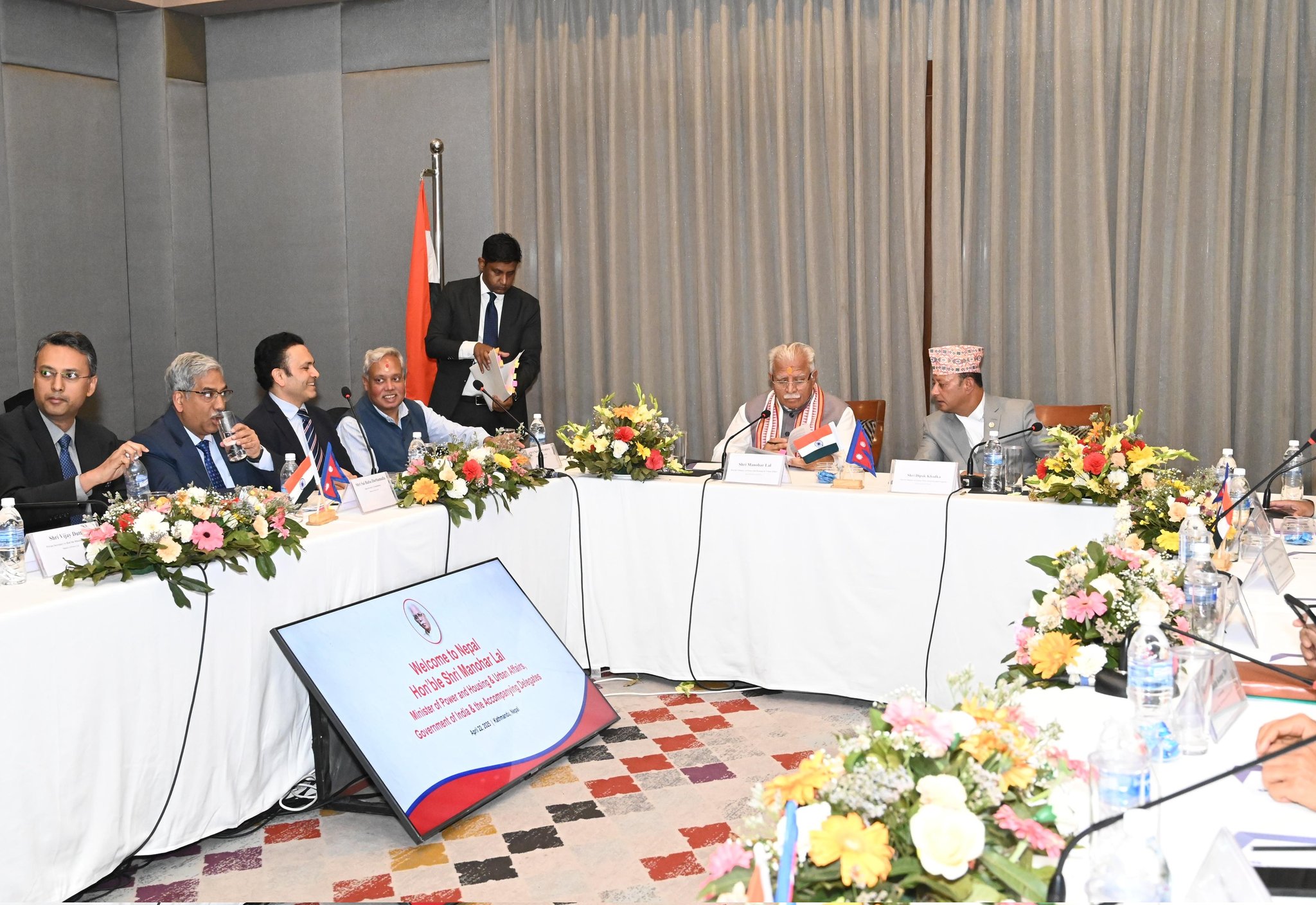Will Nepal Become an Energy Superpower? This Step with India Raises Hopes!

In a significant move to bolster bilateral cooperation in the energy sector, Nepal and India have signed a crucial Memorandum of Understanding (MoU) for the construction of two high-capacity 400 kV cross-border transmission lines. This agreement is expected to be a cornerstone in enhancing Nepal's hydropower export capacity and strengthening regional energy trade.
The MoU was signed during a ceremony in Kathmandu on Tuesday, attended by Nepal's Minister for Energy, Water Resources, and Irrigation, Mr. Deepak Khadka, and India's Minister for Power, Housing and Urban Affairs, Mr. Manohar Lal Khattar. The Indian Minister, Mr. Khattar, is on a two-day official visit to Nepal at the invitation of Minister Khadka.
The agreement was signed by Director Kamal Acharya on behalf of the Nepal Electricity Authority (NEA) and Director Dr. Yatindra Duvedi on behalf of the Power Grid Corporation of India Limited (PGCIL).
Fruitful Dialogue and Comprehensive Review
Prior to the signing, fruitful bilateral talks were held between the ministers of both countries. According to the Indian Embassy's post on the social media platform X.com, the discussions included a comprehensive review of the overall India-Nepal energy sector relationship. Topics covered included hydropower projects under construction and proposed, the need for and expansion of new transmission lines, and various aspects of electricity trade between the two nations.
Key Points of the Agreement:
- Two New Transmission Lines: The agreement covers the construction of two 400 kV transmission lines: Inaruwa (Nepal) – New Purnia (India) and Dododhara (Lamki, Nepal) – Bareilly (India).
- Joint Investment: Separate Joint Venture Companies (JVCs) will be established for the construction and operation of these transmission lines.
- Ownership Structure: The established JVC will have a 51% share ownership by the country where the majority portion of the transmission line falls, with the other country holding 49% ownership.
- Estimated Length: The Inaruwa–New Purnia transmission line will be approximately 25 km long in Nepal and 100 km in India. Similarly, the Dododhara–Bareilly line is estimated to be around 35 km long in Nepal and 150 km in India.
Symbol of Shared Prosperity and Trust:
Speaking at the signing ceremony, Minister Deepak Khadka described the Nepal-India energy cooperation as a "symbol of shared prosperity." He stated that these new transmission lines are not just physical infrastructure but represent mutual trust and a shared journey towards sustainable development. Minister Khadka also expressed gratitude for India's continued support for major hydropower projects such as Arun-3, Lower Arun, Arun-4, Phukot Karnali, Upper Karnali, SR-6, and West Seti.
Indian Minister Manohar Lal Khattar remarked that this progress in the energy sector symbolizes the deepening relationship between India and Nepal. Recalling the Nepal-India Joint Vision Statement issued in 2022, he expressed satisfaction with the significant progress made on its three main pillars: joint generation, cross-border infrastructure, and electricity trade. He mentioned that construction of the Gorakhpur-Butwal transmission line has already begun and expressed confidence that these new projects will further strengthen bilateral energy security. Furthermore, Minister Khattar termed the export of Nepali electricity to Bangladesh via India as a historic achievement.
Strategic Importance and Impact:
This agreement is a strategically significant step in Nepal-India energy cooperation. Its potential impacts include:
- Increased Export Capacity: These high-capacity 400 kV lines will create vital infrastructure for exporting surplus electricity generated in Nepal to India, helping reduce Nepal's trade deficit and earn foreign currency.
- Access to Regional Energy Markets: These lines will facilitate Nepal's access to other regional markets, including Bangladesh, through the Indian grid. Minister Khattar calling the Bangladesh export "historic" signals this potential.
- Attracting Investment: The assurance of reliable transmission infrastructure can attract more Indian and other foreign investment into Nepal's hydropower sector.
- Joint Venture Modality: The 51%-49% joint investment model ensures ownership and responsibility for both countries, potentially facilitating project implementation, although successful execution depends on continuous coordination and cooperation.
- Strategic Relationship: This agreement in the critical energy sector deepens the economic and strategic ties between the two countries, likely having a positive impact on overall bilateral relations.
In conclusion, the agreement for these two new 400 kV transmission lines opens new doors for Nepal's energy future and its energy trade with India. Successful and timely implementation is certain to significantly contribute to the economic development and energy security of both nations.




![From Kathmandu to the World: How Excel Students Are Winning Big [Admission Open]](https://nepalaaja.com/index.php/img/70194/medium/excel-college-info-eng-nep-2342.jpg)
